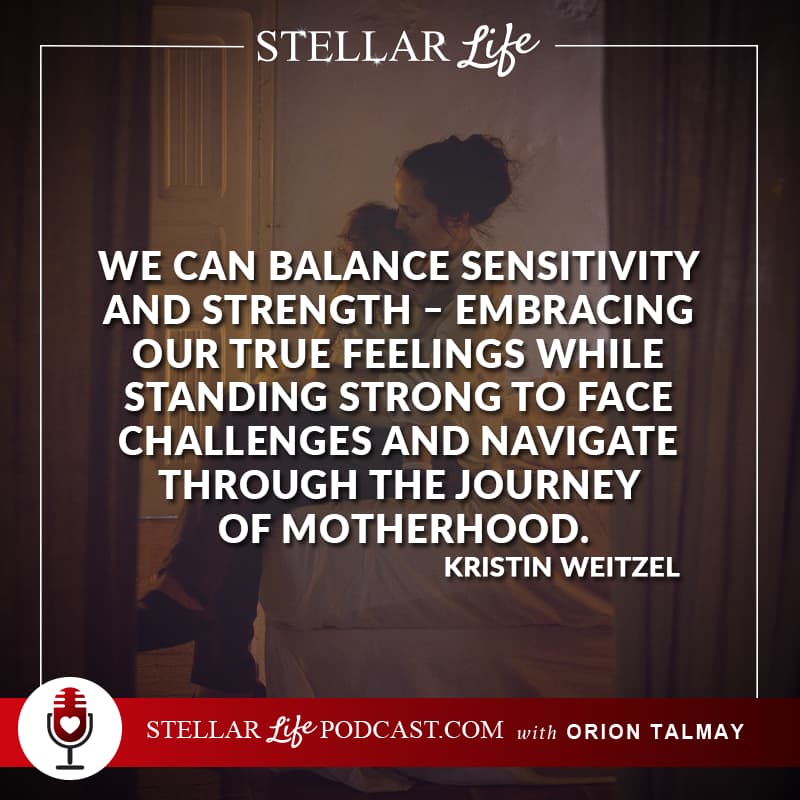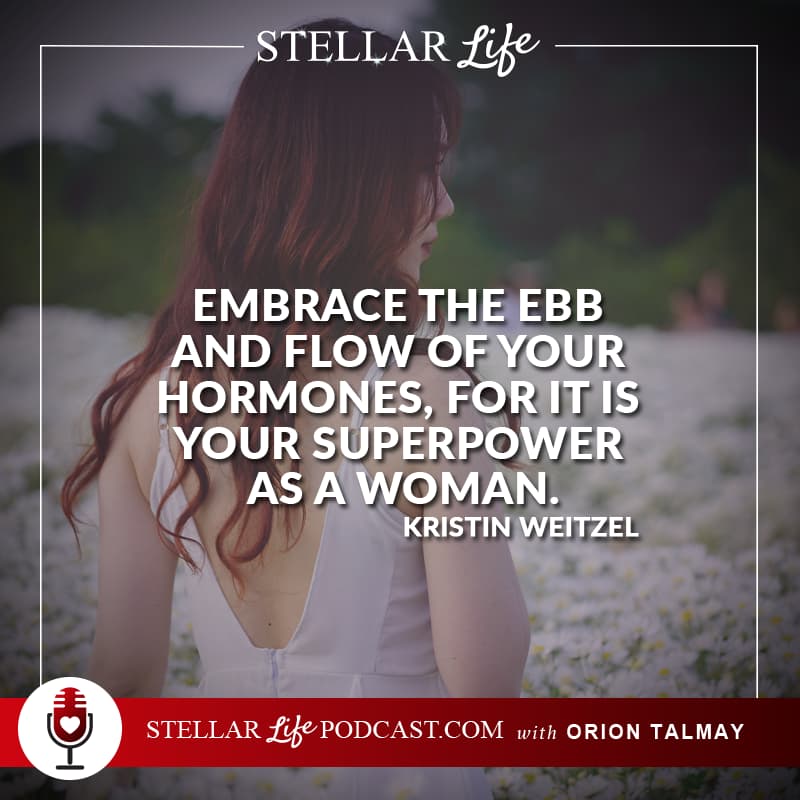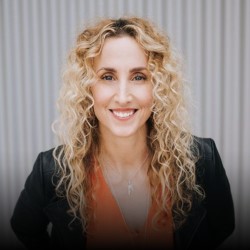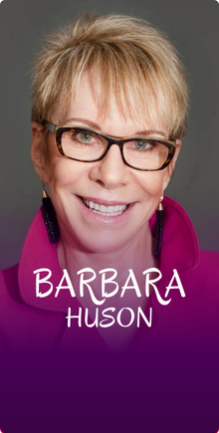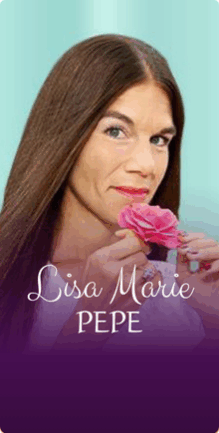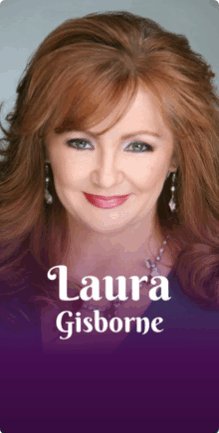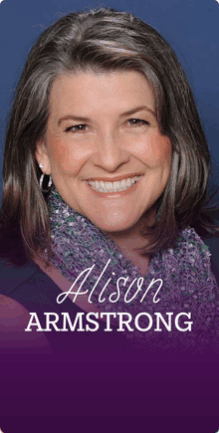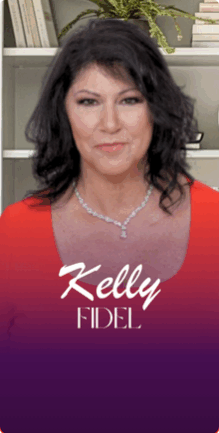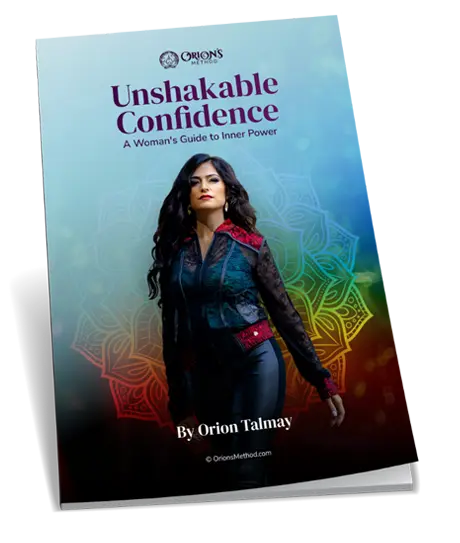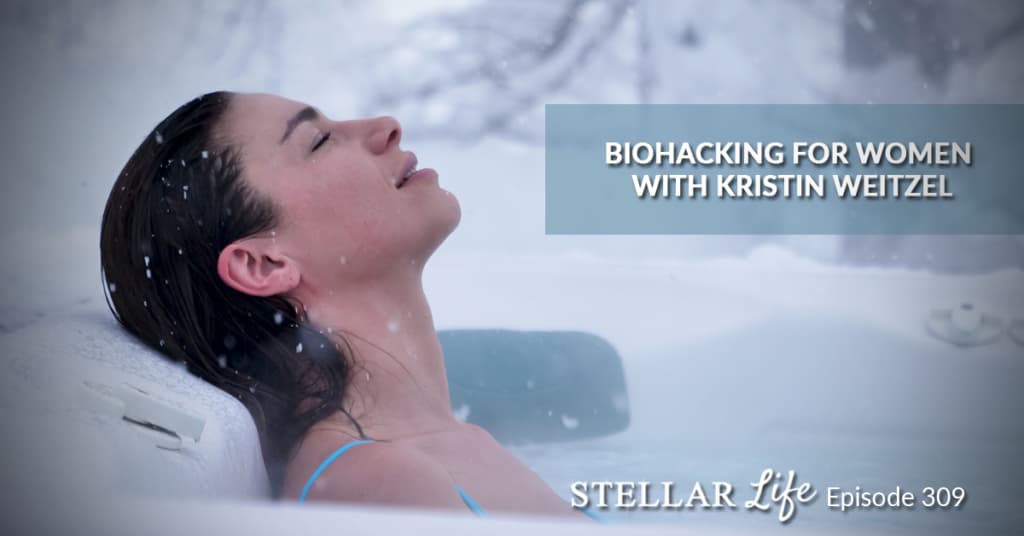
In this Episode
- [02:36]Kristin Weitzel shares her experience growing up as a ballet dancer and how she navigated food and nutrition to maintain her physique. She also discusses her challenges and how many women can relate to them today.
- [07:14]Kristin delves into the concept of biohacking and its various approaches to optimize women’s health and well-being.
- [12:25]Learn how to tap into your intuition with Kristin’s guidance.
- [17:32]Kristin and Orion engage in a conversation about hormones and women’s cycle.
- [25:36]Kristin shares her personal rituals that help her connect with her inner self and create harmony among her mind, heart, and body.
- [29:26]Kristin describes the importance of breathing exercises in reducing stress and talks about her mystical experience while doing breathwork.
- [40:54]Discover how ice baths and other cold exposure methods can relieve stress with Kristin’s insights.
About Today’s Show
Hey, Kristin. Welcome to Stellar Life podcast. Thank you so much for being here.
I’m wonderfully excited to spend time with you chatting about how we can get people healthier.
Before we begin, please share a bit about your origin story and how you became the powerhouse you are today.
Sure. It’s a roundabout story, but I was quirky, curious, and interested when I was younger. I was a dancer. I grew up dancing and wondering how to navigate food and nutrition around my desired physique. I liked to eat many things, but I also had to keep a physique that would make sense for me to dance in the ballet. So performing arts in high school, I stayed curious and researched ways I could eat differently, juicing, and all these different things.
Many people come and have worked in the wellness space or health and wellness in the biohacking world, taking their mess and making it into their masterpiece. That may have been something like the physical challenge they are working to overcome. So much of what I was working through internalized, whether it’s an eating disorder or a lack of self-worth that existed in my younger years, speaks to many women I work with today.
Also just really navigating the landscape of what it meant to be a woman in the world of wellness and biohacking when there were so many men around. I grew up a dancer and got this different shape in my teenage years. I couldn’t dance the same way because a ballerina had a specific body type.
When I was younger, my body got shaped very quickly in my late teens. Then I moved on into the world of wellness and worked in different careers in corporate America while getting these certifications around food, fitness, and optimizing my health. I worked with lots of males.
The story about how we show up as women powerfully and how we are this powerhouse badass women in the world was the story I took on too much to a fault because I was living the day-to-day around male energy and needed to communicate that way.
The breakout came when I realized we must be doing things differently as females.
The story arc of getting curious and trying to juice, understanding paleo, primal, and keto for the last 15-20 years was born from being connected to the biohacking space. It’s because of all the men that started in that sphere. The breakout for me, or the biggest lesson, had come when I realized that we must be doing things differently as females.
The things that have spoken the most passionately to me and modalities in the last couple of years, like breathwork and cold exposure, have been a way to reset or break the pattern of being so alpha and understanding how I can create stillness down-regulation, state shifting, and emotional shifting in my own body. So I’ve been working with clients in that regard.
The story is very unwinded. It will take us an entire hour, but a lot of it is around understanding the key issues with females, and the key problem with many people is that we’re equally sensitive as we are powerful. That was specifically speaking to female physiology, and sensitivity is our superpower. The sensitivity is where the magic is. We have been ignoring intuition for a long time and dancing to both sides of the coin.
This doesn’t mean that males aren’t out there having this as well, but all of us are figuring out where our sensitivity lies, where our power lies, and not feeling like we have to be on the train or we have to grind and grind until we hit burn out. My biggest goal in the world is to understand how I can state-shift people and work with more females than males. Still, I certainly work with both to understand our physiology and how to balance that sensitivity and intuition to fulfill our dreams. So that’s where it navigates itself.
It’s beautiful. It reminds me of my journey. I want to train like the man, I’m going to be the man, and then I couldn’t even find love because I was so much in this one aspect of myself and not integrating the whole of me. I’m talking about the internal masculine and feminine. I can relate to that.
I love finding stillness. I’m still looking for it. I may need a cold plunge, but we’ll discuss it later. When you discovered biohacking, what did biohacking mean to you, and when did you find it out?
We find ancient modalities and things as we work in a landscape to shift the environment in ourselves, inside and outside of ourselves.
It’s close to the 15-year mark since Dave Asprey coined the phrase. Biohacking was used in a slightly different format, a bit more around biological research. Biohacking is a specific term used widely in the media, and commonplace terminology is a word coined by Dave Asprey, the Godfather of the biohacking mission born out of the Silicon Valley biotech bubble. He had been invested in things and really in the tech world. It felt a lot like tech innovations in the beginning.
What it means to me and what it’s meant for quite some time is that we find ancient modalities and things as we work in a landscape to shift the environment in ourselves, inside and outside of ourselves. So there are plenty of ancient practices we realized, and that’s like the arc of going all the way to the other side, which is like hyper-modernized technological advances and how we can use things that feel like they are cutting edge or even bleeding edge that might feel a little bit riskier.
How can we utilize the safe and effective tools in the landscape, from ancient practices to modern-day technology, in the best way to live longer, better, happier, and healthier? It’s about when I’m 80, and I want to step off the curve, have a little, oh, I stepped on the stone, have a little trip, and don’t fall and break a hip. I now understand what I can do to live longer, happier, and healthier.
I thought you would say when I’m going to be 80, I’m going to skydive.
As Dave said, we will make ourselves live to 180. But the question is not how long we live. It’s quality in our years. Utilizing tools now that we’re younger to understand how we can potentiate a life that feels vibrant and vigorous so that we can do all the things we want, whether that will be like taking walks, running triathlons, or doing triathlons, or having lots of sex, whatever it is that we want to do.
How do we optimize? This is health optimization at its finest in some ways, and many people before the term were even coined say we are talking about how we optimize our health. When we go to the fitness scene, people are working on human performance optimization, it existed in some iteration or another, and now we have this term which is a way that like-minded people get together in a community.
It’s a beautiful community.
Embrace the ebb and flow of your hormones, for it is your superpower as a woman. Share on XYeah, and I love the community of biohackers. The term comes with much stigma, but it’s not going away. It’s just a word. It comes with some stigma. Some think anyone talking about biohacking is just throwing things at the wall. There’s a lot of judgment around it in some ways, but I’m a fan of it. I use it.
It’s a pretty masculine term, so I understand many women want to use health optimization, biosyncing, etc. It’s beautiful. It’s just semantics. How do we optimize our health and well-being? How do we live longer, better, and healthier?
I love Dave Asprey, and he was a guest on the show a while ago. It’s gone throughout the last decade. We came across each other, said “hi” and “bye,” connected and disconnected. It’s nice. I lived in Santa Monica near the bulletproof labs and went there to try the infrared sauna, cryotherapy, and some of their other gadgets. It was really fun.
As a female, what is the difference in the approach regarding biohacking and trying all those things? What do we need to look for?
There are great differences. It must be said that when I’m talking about females, I’m talking about physiological females, non-exogenous hormone usage for the most part. Because there are so many different ways that humans come into their fuller selves and full happiness. Some people are transitioning in life, or they are on hormones for various reasons. We can talk about that too, but when I’m speaking about females here, specifically physiological females, because there are sets of hormones in the landscape that are different from physiological males.
How we navigate that is something that, over the last 40 or 50 years, we’re getting hopefully better at, but it’s still not prevalent enough because women were not shown in the research for a long time. We’re relatively banned from the research. We’re left out of the study because there are too many variables, having a period, different hormone cycles, etc. Many existing protocols are made by men and just adapted by women for good or bad.
Physiological females have a set of hormones that are different from physiological males.
The first thing to fly ten thousand feet when I coach people is I always coach the individual, which is important. We all have unique bio-individual needs, lab work, etc. But, generally speaking, with women, this philosophy of going hard and learning 110% of everything we do doesn’t necessarily serve us as well as males.
The first thing is how do we tap into this ancient intuition, this beautiful neurochemistry that we are given, this cycle that we are talking about, our reproductive years that we have every month. We are talking about the life cycle as we are either preteen or perimenopausal and menopausal, and we have different hormonal cycles. So we need to know where we are in the space of our lives, our intuition, and our strengths, and then understand that we can create an energetic relationship with the world where we feel like we are allowing things to come in, that we have this balance of softness which can also be strong.
So many women think softness is weak, and it’s not about that. We can be soft and sensitive. We can feel things we know to be true and balance that with our ability to stand strong amid challenges, bear children, and navigate both things.
The first thing is how we understand ourselves as women in the world, our life, and our interrelations because it will differ for many of us. We are working with the same physiology and similar hormone profile in the specific 40 years of our reproductive years. How can we attenuate? How can we optimize based on what’s going on in our physiology?
To give a targeted example, a lot of times, I’m conservative on fasting and on adding layers of stress in our bodies for females because we can be in many parts of our lives or part of the month more sensitive to stress, more open to having anxiety, depression, or any of those things. We need to sleep more than males. I look at the first layers as the stresses we are inducing in our daily lives and how we can peel those things back to say, let’s err on the side of caution and work towards our unique bio-individuality.
We see a lot about fasting. There’s a case to be made for fasting. If you look at Dr. Mindy Pelz’s works around fasting and menopause and shifting some of the things happening in that state, generally speaking across the board, I think women are going hard on Keto and perhaps too hard. Women are going hard on fasting. They are like 18-6. Ife start, especially with these regulated hormones, those hours and that strict fasting schedule can be bad for us. They understand how to titrate stress, our bodies and space, and layering protocols.
That’s the place where women need to be strongly playing. The other thing I’ll add is fitness, which is how we pick up heavy weights. How do we move things in a way that will support less overall stress, as if we are doing 20 cardio classes a week versus going to the gym and lifting four times a week and just doing two or three cardio classes, running, et cetera?
Of course, there are athletes in the world who are training for marathons that will have to run longer, harder, and faster, and they are female athletes, and there’s a way to do that as well. Approaching our health and how we optimized from a very strong standpoint of women, I think that’s also either getting female advisors or men who have seen research and worked with many females. A lot of my mentors are males, but they have worked with many, many females and have seen time and time again the best way to work in physiology.
There’s a way to approach our health better and optimize from a strong standpoint of women.
It’s never easy and never simple. There’s never one answer. It’s just we don’t have to do it like everyone else, and by that, in many ways, I mean men, and this is not males against females. This is just for whatever reason in life. We’ve had males in the workforce setting up the 24-hour cycle with their hormone cycle the way the corporate world works.
We’ve had men putting together fitness programs since the dawn, not necessarily cycling in what’s happening with women. We’ve had this male structure in the research. Many things are based on this, all the way up to pharmaceuticals. Anyone taking any kind of medicine is approved through research on men, and there has not been enough significant research on females. We see some females having a lot of adverse reactions to medication because they were never on the research when it was pushed through to be approved. After all, there are more males in the research.
That’s a lot to unpack, I know. Still, I think it’s worth saying so that we can understand, as women in the world, how to scale back and say, “okay, I read this thing in a magazine, and is it applicable to me to be doing the research and advocating for our own bodies and own health?”
Yeah, and it makes sense because if you give the same pill to this 250-pound male or 100-pound female and there is no research, of course, it’ll have side effects. But, again, it goes back to what you said about intuition and listening to our bodies and the warning signs more than the outside voices, even if they are very knowledgeable or uniform. It’s all about listening to ourselves and our intuition.
We talked about the cycle and how the guys have a 24-hour cycle, and their hormones don’t change, and we have different cycles throughout the month. So please unpack a bit and share about the female cycles and how the hormone works with exercise and nutrition. When do we need more sleep? When do we need to go harder?
There’s a lot of discourse and conversation around this right now. I interviewed Andy Galpin, a formal authority on building muscle and physiology regarding physique transformation, a researcher, and an amazing guy. There’s a lot of lean into the studies, and the jury is out on some of the research we need. Then there is also strong evidence to point us directionally as women and how we should treat and work out.
I look at it through the lenses of how we should train, eat best for ourselves, and cycle those things around where we might feel more insular or extraverted.
If you layer on top of that anecdotal evidence and experiential, meaning I’ve worked with hundreds of women and been able to see and feel our bodies at different times of the month, then there’s a pathway forward.
When you’re looking at it, I look at it through the lenses of how we should be training, how I believe we should train, how I think we can eat best for ourselves, and how we can cycle those things around times where we might feel more insular or more extraverted.
My good friend, Kayla Osterhoff, speaks a lot about the neurochemistry of females and our cycles. She would say I am four different people during the month because we have four parts of our monthly cycles. I am like, “whatever, I am 28 different people.” Every day is a little different. Every day we are different, depending on what we do, what we take, and ingest.
It’s interesting to look at that. There are definitive times, and again, what I’m speaking about may not be true for 100% of females. Still, for most women, the clinical terminology is that day one of our cycles is the first day we bleed and get our period. It’s like day one, bleeds. Great, that’s menstruation.
Part one of the cycle is also interesting to me because when you look at menstruation, it feels chronologically as the final cleansing out, if you’re not getting pregnant, of the system to release the egg, tissue, and the unfertilized egg. That, to me, would be the end of the cycle, but probably it was males that were like, “well, here’s a marker for day one. Day one bleeds. That’s menstruation.”
Cycles are different lengths for every woman, and if you’re listening to this and you don’t know that, that’s okay. Count your cycle days. Find a way to track it in an app. I understand how you’re feeling. If you have a period, how long is it? What does your discharge look like? This stuff we don’t talk about much. Just get a sense of your cycle.
Then we just have to start the low hormone phase during our period. It’s not like we are not men but closest to men. We just have lower hormones during that time. So when we look at the period, it’s a great time to hit the gym and train. It’s a good time to get an ice bath. It’s an okay time to fast. It’s a great time to fast.
Getting limp and moving your body can help ease cramps, PMS, and any symptoms.
That said, some women, on day one or day two of their period, are like, “I don’t want anything to do with anyone.” “I feel like x and y.” “I don’t want to train, or I’m tired.” That’s fine. Intuitively, if you need more rest, then get more rest. That’s okay. Your hormones are not going to be the same as my hormones.
Traditionally, we can say, “great time to fast, a great time to train,” especially if you have any kind of cramping and stuff. Getting limp and moving your body can help ease cramps, PMS, and any symptoms.
Then we go to the beginning of the follicular phase. The follicular phase encompasses menstruation, but the follicular phase will go the way up to, let’s say, day 15 of the month, 13–15. Somewhere in there is the third phase of the cycle which is ovulation. It’s typically 36 hours or something like that. So again, it’s a little different for every woman.
Also, let me say I’m certainly not a sex and hormone expert in that regard of being able to speak so clinically to that. Still, I know hormones regarding how we navigate and optimize our health, training, fitness and wellness. Ovulation is a time, generally speaking when women are feeling extraverted. If you read some of the books and research or talk to other women, it’s a time of extrovertedness and a great time to go out and negotiate a big business deal.
I always talk about these couple of days in our ovulation anyway, these couple of days in our month, I’m extroverted, I’m feeling good, I’m going to put on my best pair of jeans, my red high heels, throw in a red lip, go out in the world, be extraverted. So it’s weird by design that way because we’re ovulating.
Hundreds of years ago, it made us feel like we wanted to be social and go out because if we were to procreate and have children, we had to have semen. To get semen, we got to go out in the town or out of the rocks, and I don’t know. This is a beautiful opportunity for us to be more extroverted. It’s a great time to train, lift heavy, be in the gym, and take fewer rest days. That whole post-period into the ovulation phase is a great time to build slow, steady, and strong muscle because of the similar timeframe and some more joint laxity. That’s again how the hormones fluctuate.
The last week of the menstrual cycle is when we are the most sensitive and adverse to stress and risk.
Then the last or final phase-out of the four phases is our luteal phase. Our luteal phase is the back half of the cycle, maybe day 15 to the end, right before we menstruate. There’s a week out there where we have some playroom to do other things in training, fueling, and whatnot. The last week of the cycle is when we are the most sensitive and adverse to stress and risk. We want to be more insular.
Many women listening to this right now are like, “great, the five days leading up to my period, I feel uncomfortable in my skin.” So we don’t have to be living with PMS symptoms. But, of course, people are dealing with bigger medical challenges that can produce those symptoms.
If we take care of ourselves and we intuit what our cycle is, and we follow a long way that our body’s hormones are changing, we can have that time at the end of the month to not go to that dinner party, take a hot salt bath, or have an extra rest day. So just take better care of ourselves because the ebb and the flow, this whole piece of estrogen and progesterone fluctuating in low and high hormone phases, is our superpower.
It’s like this dance. We have forgotten how to dance with our sex hormones and get back into it, and we must rediscover ourselves. I still make decisions that are not the smartest for that time of my cycle, and that’s how we learn. That’s how we grow.
Do you have any daily rituals? Do you do it to grow more inside and listen to yourself, your body, and your heart?
I have a meditation practice. That’s more around tuning out than tuning in. It is a way to tune it, but if I was going to describe meditation, it’s letting go and surrendering to just hearing my body. Being with what it is, not judging, and not trying to say what’s bubbling up? Why did I think of that thing? Trying to stay out of lists and rumination and sitting to let go.
Breathwork is the thing that helps me tune in. I often sleep in the morning, sometimes sitting in front of my red light panel. When I’m breathing, I can feel what feels good, what feels erratic, where I feel stuck. We talk much about breath and cold, but breath is a way to state shifts.
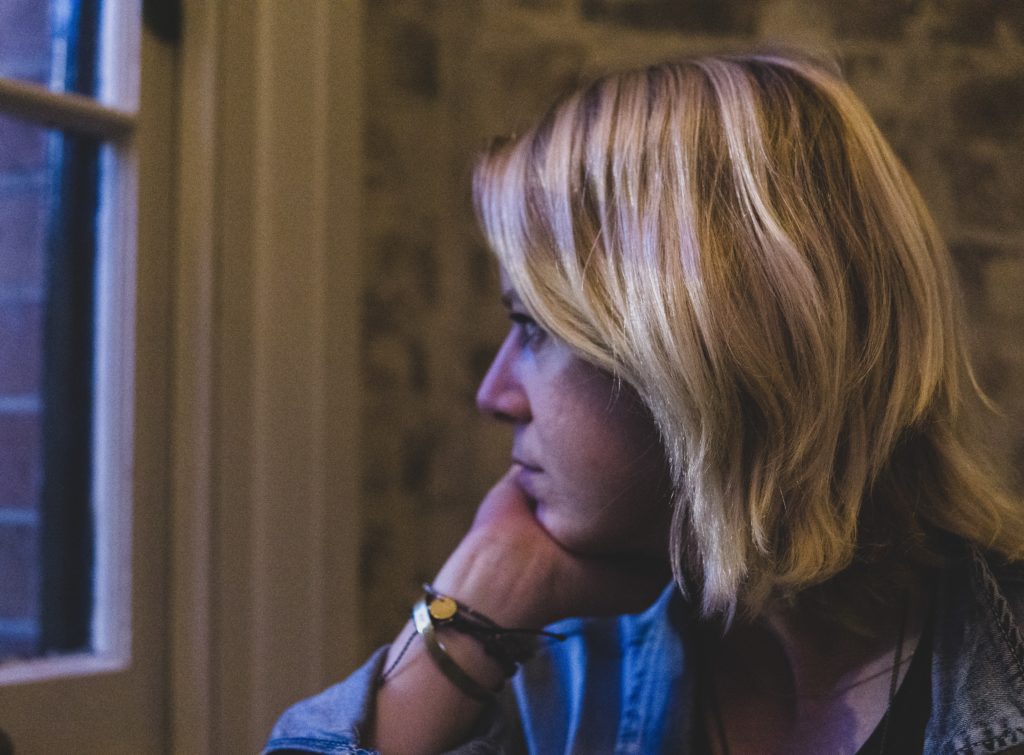
State shifting sometimes feels scary, challenging, sad, and like we lost confidence, self-worth, or all of these consistencies of social media comparison traps. But, we can release that and prepare ourselves for big weightlifting in the gym, a big presentation we give to our boss, or getting on stage to perform or talk about something.
There are plenty of conferences I need to go and speak at. I love to speak. The bigger the audience, though, sometimes we have moments of okay, I need to sound good. I need to have all of my documents together. So I’m prepared, but what happens if I get up there and my skirt rips? I trip up the stairs? So we have all these things.
We tap into the right kind of breath, we tap into our capacity and verbal acuity, and we are setting ourselves up for success just by understanding that when we are downregulated, we are behaving one way in our nervous system. When up-regulated, we behave in another way in our nervous system. To be able to play that is like playing the music that the dance of our hormones goes through. How do we figure that all out?
Do you have a specific breathing exercise that you practice with people when you’re on stage or by yourself, and you have maybe a little bit of anxiety or life happens? What do you do?
I find box breath great if it’s just a bit of anxiety. Let’s talk about the simple tools because we’re certainly not using those enough. A box breath means we have four sides to the breath, the inhale, a whole, the exhale, and another whole. We’re holding on to retention or suspension. This means holding on to the in or the out after the exhale.
A box breath is easy to do because you can pick a number. Okay, can I do a count of two, my count of two? You don’t need to be using a clock. Two in, two hold, two exhale, and two hold. I like a four-box or a six-box. It’s balancing my breath and understanding what is happening to my body. It gives a little oxygen to the tissue, and the breath holds. It’s just evening you out.
Meditation is letting go and surrendering to just hearing your body.
If people were stressed or I felt heightened anxiety, I would always lengthen my exhale. This is what I tell people in an ice bath early on in their ice bath career or ice bath practice. Breathe in for a count of two, out for a count of four. In for a count of four, out for a count of eight. We’re doubling the exhale because when you exhale longer, you’re tapping in on the exhale more to your parasympathetic calm nervous system. That can calm you relatively quickly.
Those kinds of simple things are important for us to layer in. It doesn’t have to be a 45-minute breathwork experience. Just breathe when your friend or somebody in your life, like an ex, would say this to me. You just want to punch that person in the face. Don’t tell me to breathe. I’m already breathing. It’s like getting yourself to be accountable enough to breathe for three to five minutes in a manner that can calm your nervous system and get you back into your own body.
For me, it’s about grounding my feet. Even if I’m sitting on a chair, I put both feet on the floor, don’t cross them, have a little breath work in two acts that I just talked about, doubling the exhale or a four-box, six both breath, and you can state shift.
Many women out there are ruminating, can’t sleep, have anxiety, and have things going on in their mood. If you spend five minutes with a 2X breathing or focusing on your exhale, nasal breathing only, you can calm your state and put yourself to sleep.
There are plenty of apps out there too. That’s a low-hanging fruit. I have breathwork recordings and things, but those are the low-hanging fruit to get people started.
I just did box breathing two days ago. I have a three-year-old, and I love him so much. He knows how to trigger it; he does. There was one moment when there was a lot of screaming, and I just locked myself in the bathroom, and I was just like one, two, three, four, and then it was good. After those two minutes, I’m like, okay, now I can handle him and remember that this tiny human being is my son, I’m the mom, and we can have a healthier dynamic.
If you are stressed or feel heightened anxiety, always lengthen your exhale.
This is like the space between stimulus and response. We all talk about this. It’s been written about and talked about for eons, but how do we get ownership of the space between the stimulus and our response to that stimulus? If we use our breath to get that space back, we can behave or perform in a way that feels good. It’s not about better or worse. If you still want to flap the handle and yell at someone, who am I to say? It’s probably not as healthy to do that.
Communication with everyone and your partner and everything. I talk about breathwork for performance athletes, people having better sexual experiences, people who are nervous about getting on stage, people having a tough time sleeping, and people with sleep apnea. I will speak to breathe in so many instances, which seems simple, especially when I work.
I have an online course, and I work one on one with some women, and they will say in the first couple of weeks, great, we’re going to do a breathing exercise. So I talk to them about breathing, oxygen, and how we feel better. You can even see I had my chart out for a client earlier today, this physiology chart of ways to breathe, and we talked about it.
Number one, they think it’s a little nerdy. Number two, this is where I’m there to coach them on the part of their program. Number three, I know many women who have come back to me a week or two weeks after they’ve done seven to 14 days of homework around breathing, simple tools I’ve given them or recordings I have them do, and they say, “this is my coach. I’m paying her, I trust her, and I love her. I’ll do what she says, but I’ll have all this anxiety in my sleeplessness. Breathing is not going to do much for it. I’ll do what she says because this is what I’m paying for, and this is what she’s saying.”
They come back and say I just don’t believe it. My anxiety is cut in half. I rest better at night, especially if it’s just a nasal breathing piece. Just nasal breathing will make things better, and the answer is yes, it will. It’s about awareness. It’s typically inexpensive or free just to do your breathwork. You can find Youtube videos and apps.
If we all tap back into this primal understanding of our nervous system, we can do many things better, heal ourselves, be better for our communities, and communicate. Better everything, better work, better play, better sex, better friendships, better parenting, everything. That’s like, why breathe? It’s a baseline, like sleep is a baseline. So we’ve got to start understanding who we breathe.
Have you ever had mystical experiences while breathing?
We can balance sensitivity and strength – embracing our true feelings while standing strong to face challenges and navigate through the journey of motherhood. Share on X
Sure. It depends on what you define as mystical, but if you can do some super ventilated breathing, it will help you get out of your default mode network. It shifts your brain functions so that you are tapped into more of your primal brain which means your rationale mind is just taking a back seat for a while, and you can just have emotion, trauma, or things come up where you’ve had some clearing in life, and clients have had this when I do longer breath work sections.
The emotional release doesn’t have to be tears. A lot of people think it’s like screaming in tears. Sometimes people have big laughter, and sometimes people are just in awe. Sometimes people tap into their ancestors. There are so many different perspectives and ways people can feel.
I’ve had lots of differences. I’ve done breathwork where I’m like talking to an ancient tribesman in Africa in my mind’s eye. He’s certainly not in the room physically that anyone else can see. I’ve had breathwork that I’ve had a lot of emotional processing. I’ve had breathwork that opens me up to visions, ideas, thoughts, or potentially designing my dreams in a way like, oh, I had a beautiful brainstorming idea come to the surface during breathwork.
I think it’s helped give my body rest when I need it, helped me tap into burnout and understand I’m an amazing human just as I am right in the space, this body, and this form, whatever is going on, and slowing down might help me out.
Mystical experiences of all sorts and kinds, sure. I’m here for it. It’s like you’re on the science spectrum or you’re on the woo spectrum. I took a plant medicine facilitation course because I sometimes work with breath and cold in the plant medicine space.
Do you do ice baths with plant medicine?
Not while people are in medicine but around those experiences. If they are like a weekend-long experience, I love participating in holding space. Service is my medicine, so I like to join in holding space for those people, hosting, and doing some leadership around breathing, people, breath work for the weekend, and putting people mid-weekend in the daytime when everyone’s feeling quite aware and not altered to put people to ice because it’s the shortest distance between point a and b, especially if people have had great experiences to get into their bodies and get clear.
Much of that is not about what’s happening in the cold water. Yes, you can be nowhere else in the present but in the cold, but a lot of the beauty of that comes from the ice baths during the weekends or just ice bath, in general, is about right when you get out, the bliss chemical cascade from your brain like you’re getting hits of dopamine, epinephrine, or oxytocin between the plunge and getting out. You’re getting a deeper connection to people that you plunge with.
Breathing helps you get out of your default mode network. It shifts your brain functions so that you are tapped into more of your primal brain.
Your innermost truest childlike self can come out and play, and it’s a parasympathetic rebound in many ways. It’s amazing to see people process and integrate their appointments as experiences, utilizing that and the many beautiful things that come with it. But, again, it’s nice to have a coach in those experiences because you want to be carried through.
Yeah, it sounds like an amazing experience. What comes across from you is you seem to have a big heart, and you care about the people you work with. I can just feel it. It sounds like a wonderful experience.
This is like my big expression. I did all these things in my life with all of these jobs, all of these transferable skills, and I coach women and love it, and I get to do this work now that navigates through breath, cold, health, and fitness optimization. So I feel super damn lucky to watch.
I always say to clients I’m not doing the work for you. I’ll tell you the things to do. I’m opening the window or door for you to rediscover the person that you’ve always been. That’s the lesson. We’re already showing up wonderfully, and females listening to this right now, Orion and I are here to say to you whatever you look like in the mirror, whatever you feel, it’s you and you. You’re rediscovering this beautiful, incredible, wild, intuitive female that you are, and your capacity is endless.
I often see clients, and I have friends, and sometimes even, we talk to ourselves in the mirror or just in general and our bodies in a way we would never let a girlfriend get away with speaking that way. This negative self-talk. How do we let go of that? How do we say I am incredible, and so are you, especially in rooms of other women, especially in places where you and I get together in this podcast? We can make waves and go further together by sharing some of this. Whether it be a healthy landscape or letting women look in the mirror and feel like, “hell, I’m all in.”
Hell yeah, and amen, amen, and amen to everything you just said. You take people on experiences doing ice baths, guide them, or coach them to be healthier, and obviously, you also coach their mental state and mindset. What happens when somebody takes an ice bath for the first time or if somebody is listening and wanting to take an ice bath? What are the few things that you would guide them through?
I’ve been coaching people through ice baths for over six years. I’ve put at least 2000 people on the ice one-on-one. I’ve seen a lot of different responses. So many other groups put them on the ice, just powering people through super fun and futuristic ways, all different styles.
Every woman's cycle is unique, and no two women have the same hormonal makeup. Share on XIf you want to talk about deliberate cold exposure, I have an instructor training where I train people at sherpabreathandcold.com. So that’s really about sessions and creating instructors so that we can spread the world of these good practices to more and more people.
It’s important to say there are some contraindications if you are talking of cold exposure. Intentional cold exposure is beyond the cold shower because we have cold showers, cryotherapy, ice baths, and even nature plunging and dipping in nature. The first two, for the most part, most people are okay with. Taking a cold shower, you can turn the knobs if you are cold. You can go whoo, and then 10 seconds later, you can put it back warm.
Even cryotherapy is not a big deal.
It’s nothing too crazy as long as you wear the mittens, don’t touch the gas, and don’t do anything silly. When you get too cold plunging, deliberate cold exposure, which is where when you look at the research, although it’s definitely like we want more, there’s a lot of positive research around cold exposure when you are submerged in ice—submerged preferably up to your neck, but your body is submerged in ice—no longer is the thing where we just put our arm in the cold water because we hurt our arm or in ice. Even athletes now don’t do that, not so much.
Putting yourself in a cold exposure, if you are listening and into it, most people can do it, and it’s not as scary as it seems. Anticipation of the ice bath is worse than the ice bath itself. That being said, if you are pregnant and you’ve never had an ice bath before, if you have high blood pressure, you’re on some high blood pressure medication, under the supervision of a doctor, if you have diabetes, if you have nodes which is a circulation issue, don’t do that.
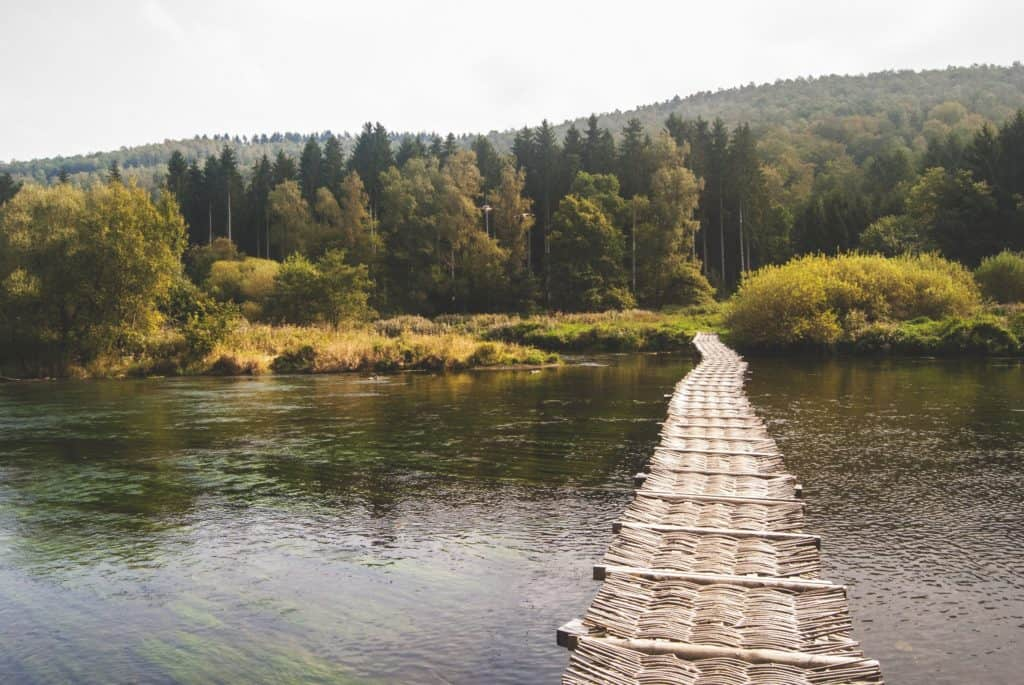
I am here and not a medical doctor, but I have witnessed and seen people with nodes mitigating all of their symptoms by taking frequent ice baths. But, again, less is important to know for women. Men do better ice bathing and plunging every day if they want. For women, I’m a little more conservative. It also depends on how much stress you show up with and how long.
There’s a lot to unpack with the ice bath thing. Still, I would just say, “know from a medical practitioner if you have any questions or curiosities,” thinking I don’t know if this is okay for me because someone listening has something in their life and health condition. Check with your person first. Check with your functional medicine person, your medical practitioner, et cetera and get some green light. Talk to a coach. You can always call me and ask, and I can tell you my experience, and then you can decide for yourself.
I would tell people who want to try it and feel like they are generally healthy that it can get cold. In the beginning—especially in the beginning—I think the best practice you could take is to do some down-regulation breathing before you get into the tub, the plunge, the barrel, the dip, or whatever. Spend a minute or two just understanding how you can calm your nervous system as you stand next to this icy cold water and then mirror that breath as soon as you can after you step on the ice.
Because you’re going to step in and step up to your neck without hesitation or expectation, that’s what I say nine times out of ten to people getting on the tub or whatever dip they do. No hesitation, no expectation, just go all the way in.
Somebody was telling me a story about Wim Hof, and somebody interviewing him, and you know who Wim Hof is?
Yeah.
He’s famous in this world. Wim, you’re doing all this amazing stuff. You’re climbing mountains in your shorts and flip-flops. You’re getting ice baths. You’re sitting there all day. You’re diving under cold water and channels. How are you doing this? What’s the secret? How are you managing it?
He told someone I would love to find this in writing, but this is the story that circulates—I let it be cold. We know we’re getting into cold water. So how do we let it be cold for a couple of minutes of deliberate time we’ve decided to spend? I say this a lot, and now I’ve been quoted as saying we don’t get into ice baths to get good at taking ice baths. We get in ice baths to get food in life.
Let’s do that just like we are learning and understanding how to manage our stress capacity and load. You can start wherever you are at. If you’re going to get on the ice, you want to try to get into at least the first 90 seconds. The first 10 seconds, you are like it’s cold. You react. You get downregulated to nasal breathing and the longest exhale of the day as soon as possible. Try to be easy, breathe into your body, and open your eyes.
Focus on the wild landscape because we are reverse engineering. We are telling our brains that we are safe. When we are heightened, we are chased by the tiger. When we’re highly stressed, our vision starts to get smaller. If we look at the landscape and take in everything, we remind ourselves we are safe, and we are safe. If we are breathing, then in the cold, not. But if we’re breathing in the cold, I’m safe—more diaphragmatic breathing, expanding the lower ribs. I’m fine. I’m safe.
We can transition the body to go, “Okay, I’m safe. I can calm down the system.” If you couple that with getting up your neck, you have a physiological response that will slow your heart rate. So you put those things together, and you can settle into something I call the turnover, which we see happen in people for about 30–90 seconds on the far side.
That’s why I say stay in 90 seconds because your body will turn over as soon as 30 seconds or as long as 60 or 75 seconds. You’ll settle in. You’ll have a moment that will feel like a little surrender, and you’ll go, okay, I’m doing what I said I would do. This is a little hard, but I’m doing it. I’m okay, and I’ve decided to do it. I can go out when I want, and then you just stay in for another 30 seconds or minute or try a two-minute ice bath.
We can create a dynamic relationship with the world if we understand our position in life, trust our intuition, and embrace opportunities. Share on XAmazing.
Nine times out of ten, ninety-five times out of one hundred, it’s not a problem. It’s not scary. It’s not someone who won’t get out. They’ll be able to do it.
Yeah. I want to take an ice bath with you when I can.
I’m traveling all over the place, even a little bit all over the world this year, so wherever everyone is, shout out to me and tell me where you will be. Let’s book a training course in your city.
Amazing. Before we say goodbye, for now, I have to be respectful of your time. I know you have a women’s biohacking online course and a gift for our listeners. Can you share that with us?
Yeah, for sure. I have a women’s biohacking course and an online health optimization course. It’s a group program. I shot a video for eight modules plus two bonus modules, all online, for which I shot a video. I also created content for slides and short reads to make it approachable, palatable, and relatively easy to go through. Of course, you are here to learn more about your body and do some math and science there.
Then we meet twice a month online and have live group coaching and some incredible groups of females. That’s Warrior Woman Mode online, my Instagram handles, warrior woman mode and the gift I have for you guys is, if you could put it in the show notes, $250 off the online course, which is a year. You get the online course for lifetime access and a year of group coaching. That’s exciting.

It’s great if they want to do it all at once. It was $250. There’s also $99 a month. I just want to make a course that feels approachable. A year of coaching with me one-on-one is tenfold expensive. That’s fine.
Some clients want to work one-one, but if you want to have a reasonable price for health coaching experience if you are going to show up for yourself, then the online course is designed to do that, designed to be in the community with other women who were dealing with life’s adventures together and all the information and data that you need to discover your baseline and improve and optimize your health is there.
Amen. Very good. Where can people find you? Where do they go to get this bonus?
My new website—super proud of it. It’s taken eight months to pull together—is wellpower.life. Inside are access points to my coaching course, and then the $250 off code, people will just enter all one world, no spaces, “stellarlife.” So that will give them $250 off the women’s online biohacking course and the life coaching that comes with it. That’s the most fun part, and I think when we get into calls with someone. My podcast is WELLPOWER—tons of free education and information.
Amen, that’s amazing. Thank you so much, Kristin. That’s wonderful. I wish we had more time to speak right now. Thank you for sharing everything that you shared with us. Thank you for the bonus for our audience, and thank you to everybody that listened. We love you. Remember to love yourself in the mirror and take care of yourself. I urge you to take a cold plunge.
Tag us on social if you do. Tag us on social media so we can see it. Then, I can share the cold plunge with anyone who is listening.
Yeah, that sounds amazing. Thank you so much, Kristin. I appreciate your time.
